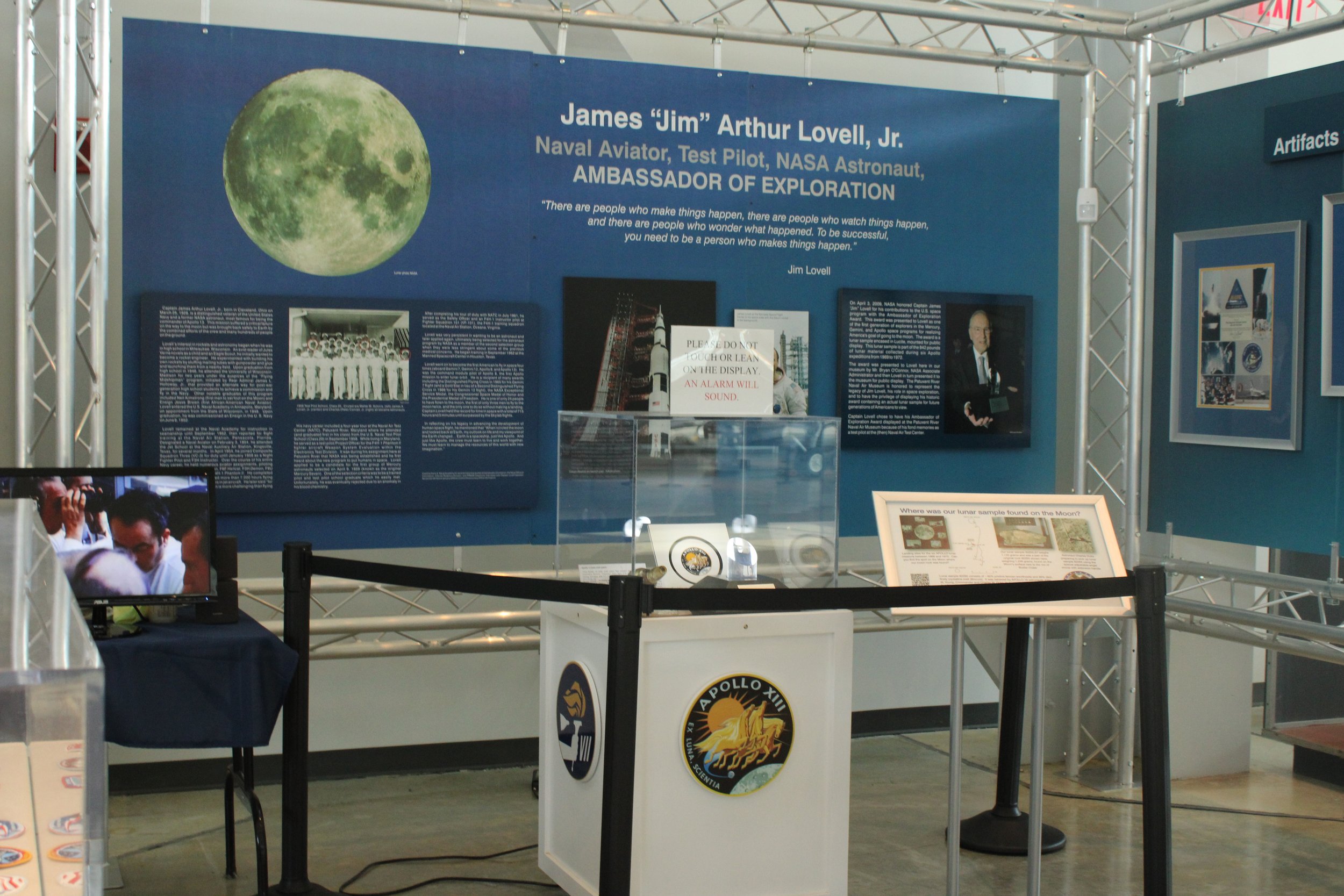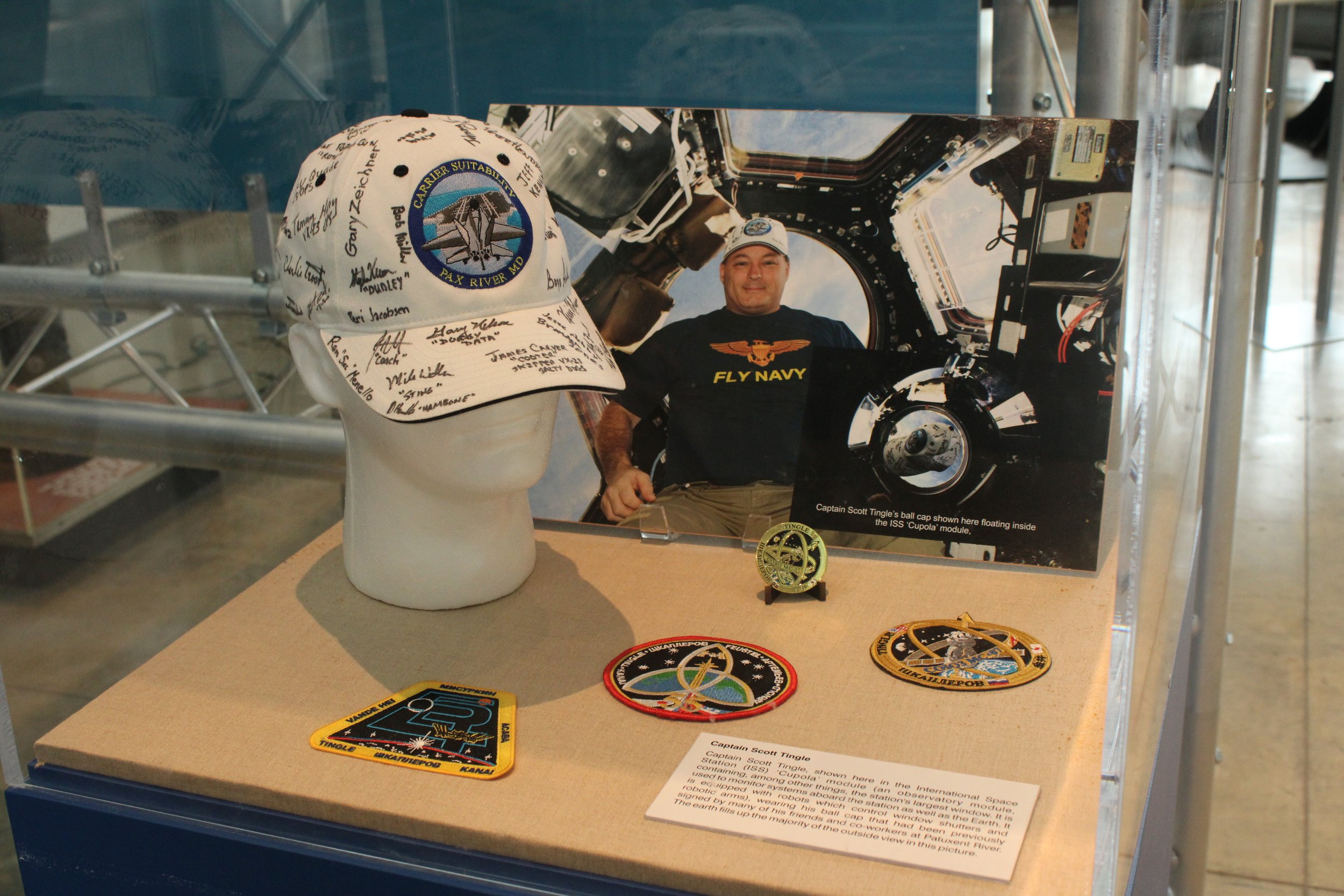The genesis of the PAX Museum’s Space Exhibit was a major donation from former Astronaut James Lovell, Jr., a former test pilot at the Naval Air Station, Patuxent River, Maryland who donated a lunar sample brought back from the Moon. In addition, Lovell donated several other amazing artifacts including a patch flown around the Moon on Apollo 13 and several additional items flown on previous Gemini space flights.
Come see our scale model (1/10th actual size) of the Space Shuttle ‘Discovery’ that formerly was on display at the Lyndon Johnson Space Center in Houston, Texas. Learn about space flight and the many other ways the US Navy has supported the national space program since its inception.














